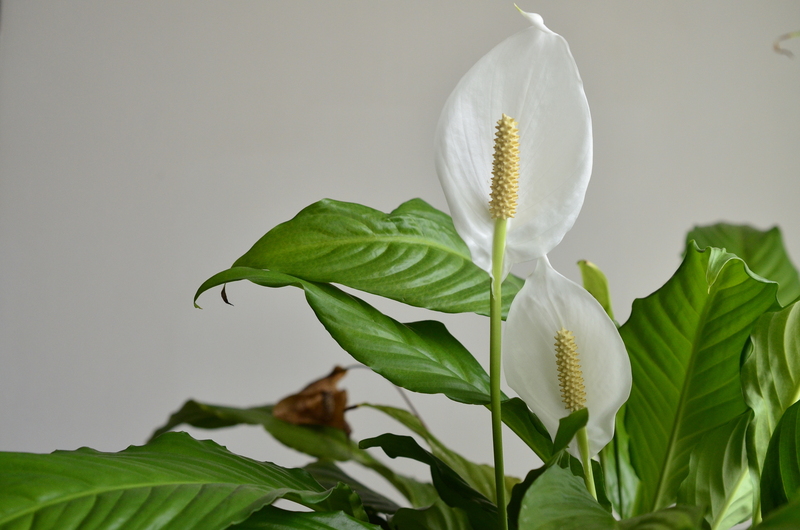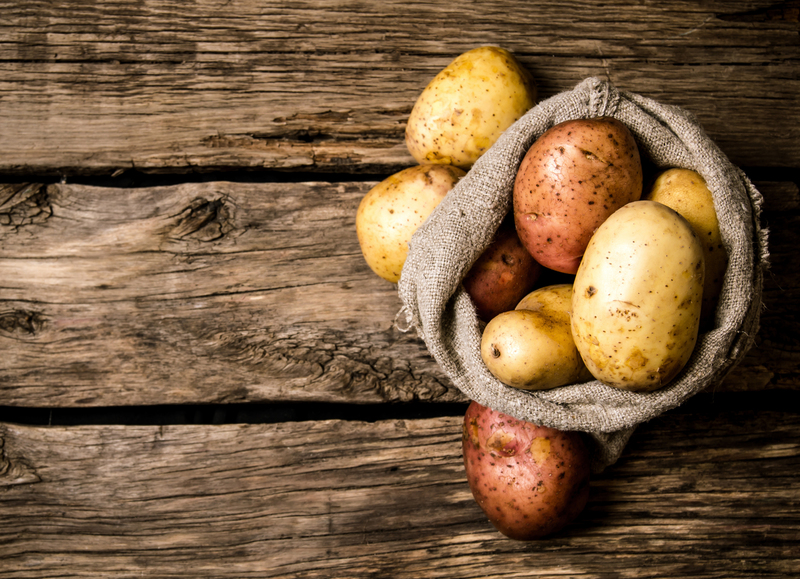Flourishing Orchids: Expert Care Advice
Posted on 22/06/2025
Flourishing Orchids: Expert Care Advice for Thriving Plants
Orchids are renowned for their exotic beauty, diverse varieties, and the unique challenge they pose to both novice and experienced plant lovers. While some may find orchid care intimidating, mastering the art of nurturing flourishing orchids can be exceptionally rewarding. In this comprehensive guide, you will discover expert tips and secrets for orchid cultivation, ensuring your prized plants bloom beautifully year after year.

Understanding Orchids: The Basics
Before delving into advanced care tips, it's essential to understand the unique requirements of orchids. With over 25,000 species and countless hybrids, orchids are incredibly diverse. However, most cultivated orchids share similar care necessities.
Common Orchid Types for Homes
- Phalaenopsis (Moth Orchid) - Popular and beginner-friendly, available in many colors.
- Dendrobium - Features cane-like stems and blooms in various hues.
- Cattleya - Known for large, fragrant flowers and vibrant shades.
- Oncidium - Nicknamed 'Dancing Lady' for its unique petal shapes.
- Vanda - Thrives in humidity; produces striking, colorful blooms.
Essential Orchid Care Tips for Lush Growth
Unlocking the secrets to flourishing orchid plants boils down to meeting their natural requirements. While every variety has its peculiarities, these foundational aspects apply to almost all:
1. The Right Potting Medium
Orchids in the wild typically cling to trees, drawing nutrients and moisture from the air. Thus, standard potting soil is unsuitable. Instead, use specialized orchid mixes containing:
- Bark chips (fir or pine bark)
- Coconut husk
- Sphagnum moss
- Perlite or charcoal
Tip: A well-draining medium prevents root rot, a common orchid issue.
2. Watering Your Orchid Correctly
Improper watering is a leading cause of orchid distress. Orchids require:
- Consistent moisture while avoiding soggy roots.
- Allow the medium to dry slightly before rewatering.
- Watering about once a week in most homes, more in dry climates.
Advice: Insert a finger into the potting mix or lift the pot; if it feels light and dry, it's time to water.
3. Providing Sufficient Light
Light requirements vary, but most orchids flourish with:
- Indirect, bright sunlight (east or south-facing windows are ideal).
- Leaf color as an indicator: Bright green is healthy, dark green may signal insufficient light, and yellow or red tints could mean too much.
Tip: If natural light is scarce, supplement with grow lights designed for orchids.
4. Temperature & Humidity: Creating the Perfect Microclimate
Flourishing orchids thrive in consistent temperatures and humidity levels:
- Daytime: 65-75?F (18-24?C)
- Night: 55-65?F (13-18?C)
- Humidity: 40-60% is optimal
Misting the air around your orchid, using humidity trays, and grouping plants together all help maintain ideal moisture.
5. Fertilizing for Healthy Blooms
Orchids need feeding, but gently. Use a balanced orchid fertilizer (20-20-20 or similar) diluted to half strength, and apply every 2-4 weeks during active growth.
- Never fertilize dry roots; water first!
- Flush pots with plain water monthly to prevent salt buildup.
Pro Tip: Reduced feeding during dormancy encourages spectacular flowering in the next cycle.
6. Repotting Orchids: When and How
To keep orchids flourishing, repotting is crucial:
- Every 1-2 years, after flowering ends
- When roots outgrow the pot or the medium breaks down
Fresh medium ensures nutrient absorption and prevents disease buildup.
How to Encourage Orchid Reblooming
A common question: How do I get my orchid to rebloom? With the right care, it's not just possible--it's expected!
- Give a period of rest after blooming; slightly reduce watering and feeding.
- Provide a drop in nighttime temperature (8-10?F lower) for several weeks to stimulate flower spike growth.
- Don't remove old flower spikes unless they're brown and dry.
Patience is key: flourishing orchids may take several months between bloom cycles, but the reward is worth the wait.
Common Issues That Prevent Orchid Flourishing
Even with meticulous care, issues can arise. Understanding common orchid problems is crucial for turning struggling plants into thriving orchids.
Yellowing Leaves
- Overwatering: The most frequent culprit. Roots suffocate in stagnant water.
- Light stress: Too much direct sun burns leaves, too little stalls growth.
- Natural aging: Older bottom leaves may yellow and drop off. This is normal.
Wilting or Limp Roots
- Root rot: Usually from poor drainage or overwatering. Inspect roots--healthy ones are white or green and firm.
- Underwatering: Roots shrivel and medium is bone dry. Gradually rehydrate.
Failure to Bloom
- Insufficient light: Move orchid closer to a bright window.
- Wrong temperature: Try providing a cooler night temperature.
- Wrong fertilizer: Avoid high-nitrogen feeds. Choose a bloom-booster formula if needed.
Expert Orchid Care Tips for Year-Round Success
Beyond the basics, consider these advanced strategies for growing vibrant, flourishing orchids:
- Maintain air circulation: Orchids in nature receive gentle airflow. Use a fan to prevent stagnant, disease-prone air around your plants.
- Avoid leaf crown rot: Always water early in the day and avoid water pooling in the plant's crown.
- Monitor for pests: Inspect leave undersides and roots for mealy bugs, scale, or aphids. Treat early with neem oil or insecticidal soap.
- Label your orchids: With so many varieties, keeping track of care preferences is invaluable.
Orchid Propagation: Expanding Your Collection
Propagation is an exciting way to multiply your flourishing orchids:
- Division: For sympodial types like Cattleya and Dendrobium. Divide healthy clumps into two or more with at least three pseudobulbs each.
- Keiki removal: Phalaenopsis sometimes produce baby plants (keikis) along the spent flower spike. Once roots form, carefully pot the keiki.
Debunking Common Orchid Myths
To transform your orchid-keeping experience, it's vital to separate fact from fiction:
- Orchids are difficult to grow. False! With proper guidance, they're no harder than most houseplants.
- They must be watered daily. False. Most orchids thrive on less frequent watering, especially in cool or humid homes.
- Cut roots to fit the pot. Never! Orchids need their root system intact--choose a larger pot instead.
The Lifecycle of a Flourishing Orchid
Understanding the orchid life cycle helps align care with plant needs:
- Growth phase: After flowering, new leaves and roots develop. This is when to fertilize.
- Rest period: Some orchids (especially deciduous types) rest after bloom, dropping some foliage and requiring less water.
- Blooming phase: With the right triggers, flower spikes emerge, leading to weeks or even months of spectacular blooms.
Decorating with Orchids: Enhancing Your Living Space
Flourishing orchids are not only captivating, but also highly versatile for interior decor:
- Place orchids in decorative containers--ceramic, glass, or woven baskets.
- Arrange groupings at different heights for a botanical display.
- Use orchids as focal points on windowsills, mantels, or shelves.
- Rotate plants weekly for even growth and balanced light exposure.
If you're sharing your love of thriving orchids with others, they make perfect gifts for special occasions--symbolizing beauty, love, and strength.

Best Orchids for Beginners: Flourishing with Ease
Certain orchids are almost foolproof, making them excellent for beginners aiming for swift success:
- Moth Orchids (Phalaenopsis): Tough, adaptable, blooms for months.
- Ladies' Slipper Orchids (Paphiopedilum): Enjoys household conditions, unique pouch flowers.
- Dancing Lady Orchids (Oncidium): Easy to bloom, tolerant to light variations.
Final Thoughts: Thriving Orchids Year After Year
By following the proven tips outlined in this guide, flourishing orchid care becomes an attainable reality. Remember, patience and keen observation are your best allies. Each orchid will reward gentle attention with striking flowers and lush growth, transforming your home with natural elegance.
So, whether you're growing a single specimen or building a dazzling collection, let these expert orchid care techniques pave the way for success. With a bit of dedication, your orchids will not only survive--they'll flourish.
Essential Orchid Resources
- Royal Horticultural Society: Orchid Guide
- American Orchid Society: Culture Sheets
Start your journey today, and enjoy the endless delight of flourishing orchids for years to come!

